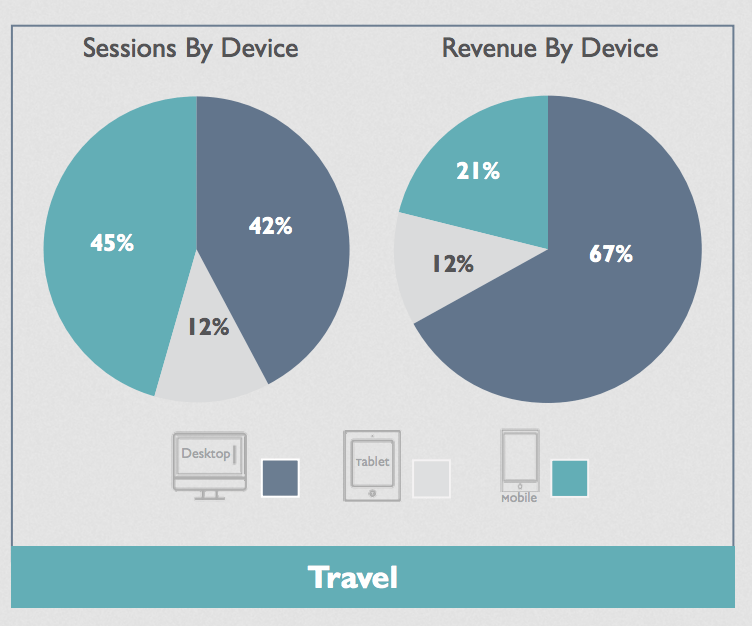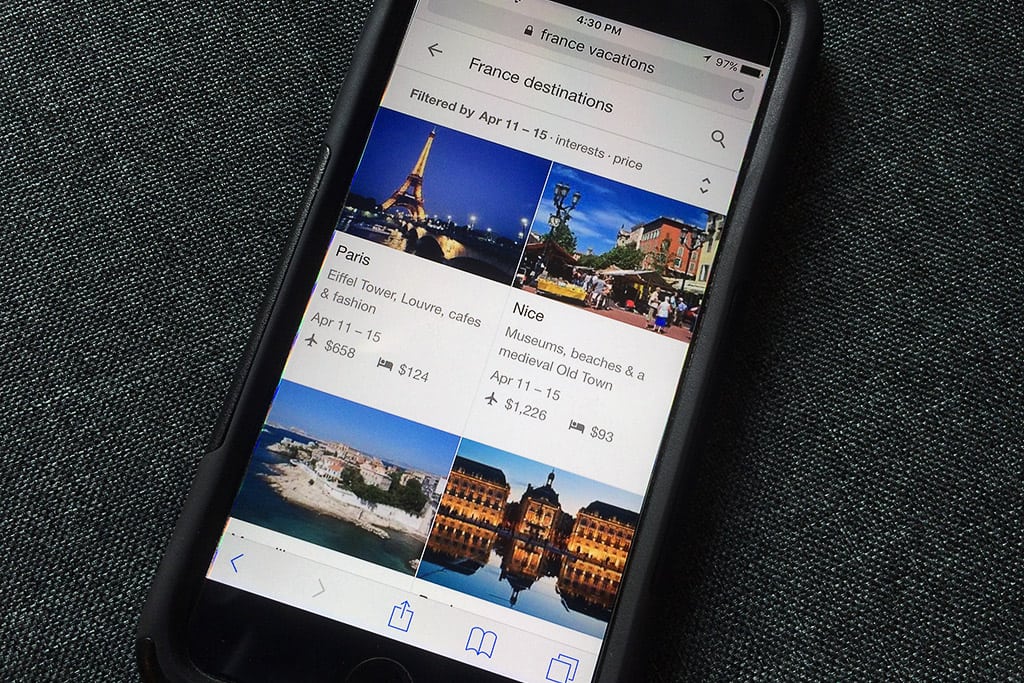Skift Take
Google is an even mightier king in 2016 when it comes to what leads travelers' to brand websites and, ultimately, what gets them to make a purchase. But direct website visits shouldn't be overlooked: These were the next largest source of site visits and revenue.
Travel brands have spent years growing their email, Facebook, direct visits, and revenue streams but Google stands above every other source and should be — and in many cases already is — brands’ focal point.
That’s according to a new study from digital marketing agency Wolfgang Digital which analyzed 87 million website sessions on travel and retail websites from April 2015 to March 2016 that led to $258 million in online revenue, with hotels and attractions making up most of the travel sites that were part of the study.
Many brands have been paying attention to Google’s ad scheme and how it eliminated the right-hand rail to put ads above organic search results. But it turns out organic search results on Google, not ads, account for a higher percentage of website visits and revenue. The data show 39 percent of travel brands’ site traffic comes from organic Google searches compared to 20 percent from Google cost-per-click advertising. Organic Google searches also lead to nearly 50 percent of travel brands’ revenues versus Google cost-per-click ads yielding 20 percent of revenue (see charts below).
Display advertising, which makes up about 38 percent of digital marketers’ budgets, didn’t register as a top 10 source for website traffic for travel brands and doesn’t perform well for revenues, according to the study.
Mobile devices have helped Google gain even more strength among travelers as they discover things to do while they’re traveling and turn to search engines for answers. Though other sources haven’t been defeated as direct website visits, for example, are a higher percentage of visits than Google’s cost-per-click ads for travel brands and they return about 16 percent of revenues. Some 58 percent of direct visits assisted, or eventually lead to, a traveler making a booking and that’s just ahead of Google organic search (55 percent).
Chart 1: Organic Google searches account for nearly 40 percent of all website traffic for travel brands. It’s notable that Facebook organic and Facebook cost-per-click advertising yield next to no website traffic for travel brands, even as many travel brands are increasing their advertising on Facebook.

Chart 2: Google is also powerful for revenues and drives higher percentages for revenues than it does website traffic for travel brands, with nearly half of all revenue coming from organic Google searches and 27 percent coming from Google cost-per-click advertising. Email essentially accounts for no revenue or website traffic while direct website visits are the third largest revenue source behind Google.

Chart 3: Mobile is bigger than desktop for web sessions on travel sites but it still hasn’t caught up on the revenue side — by a lot. Desktop sessions’ share of travel website revenues are 67 percent versus mobile sessions’ 21 percent.

Source: Wolfgang Digital
The Daily Newsletter
Our daily coverage of the global travel industry. Written by editors and analysts from across Skift’s brands.
Have a confidential tip for Skift? Get in touch
Tags: advertising, google, skiftstats
Photo credit: New data show 39 percent of travel brands' site traffic comes from organic Google searches compared to 20 percent from Google cost-per-click advertising. Pictured is Google's new price comparison feature for destinations. Skift
